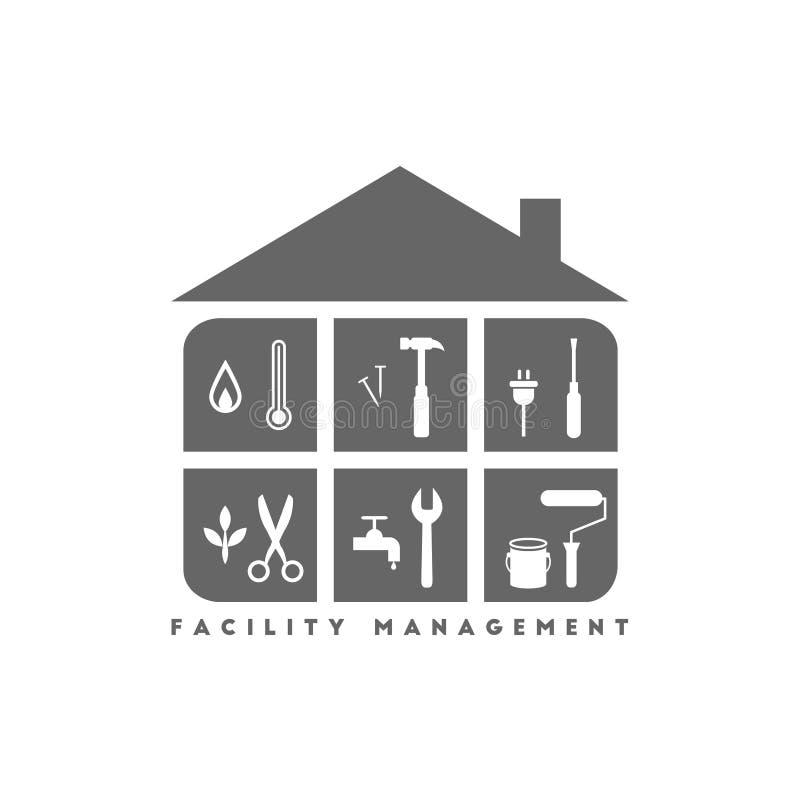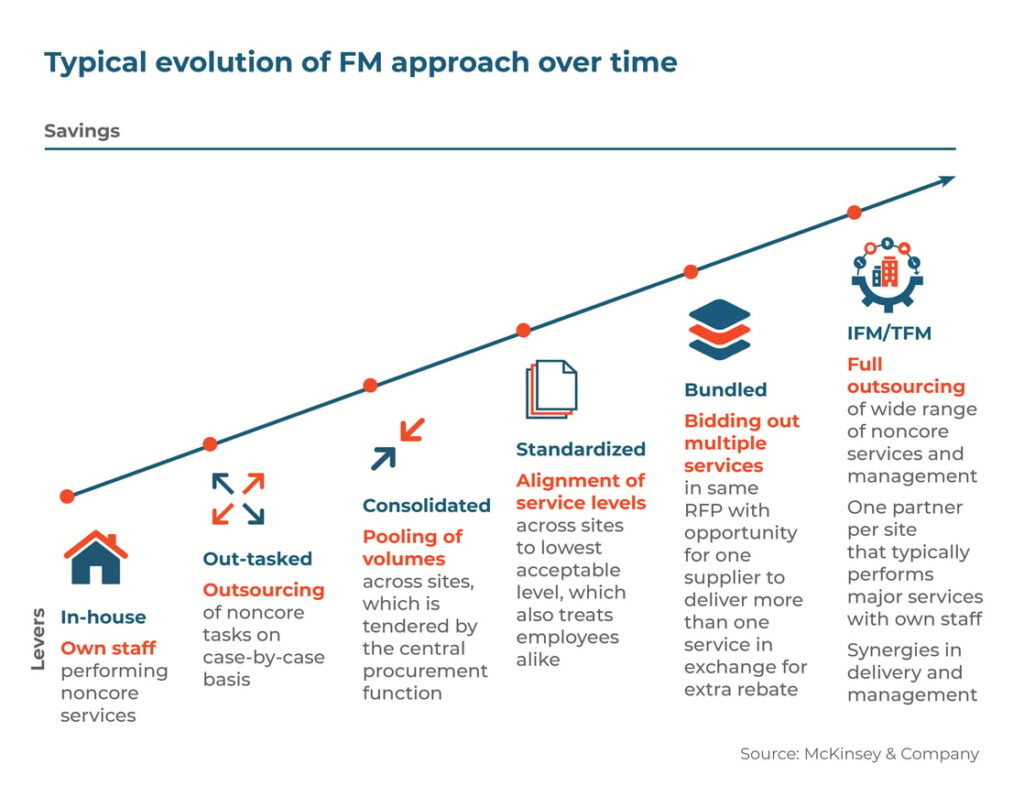The Role of Total Facility Management in Ensuring Workplace Safety and Compliance
The Role of Total Facility Management in Ensuring Workplace Safety and Compliance
Blog Article
Why Total Facility Management Is Vital for Organization Success
Total Facility Management (TFM) serves as a foundation for service success by integrating diverse operational elements such as upkeep, room utilization, and safety steps. As services browse an affordable landscape, recognizing the multifaceted benefits of TFM can be critical in driving expense effectiveness and enhancing worker efficiency.
Recognizing Total Facility Management
Total Facility Management (TFM) encompasses an extensive method to handling an organization's buildings and connected services to guarantee ideal performance, safety, and efficiency. TFM integrates various disciplines, consisting of upkeep, procedures, area management, and security procedures, to produce a cohesive structure that sustains a company's core goals.
At its core, TFM aims to improve the processes entailed in facility management, boosting and lowering redundancies solution shipment. This approach entails the control of tasks related to residential property management, such as repairs, cleansing, and power management, to cultivate an efficient environment for stakeholders and staff members alike. TFM likewise emphasizes the relevance of carrying out best techniques and ingenious technologies to boost service quality and minimize operational prices.
By aligning facility management tasks with organizational goals, TFM improves total performance while making sure conformity with health, security, and ecological laws. Thus, TFM serves not just as a logistical feature yet likewise as a tactical possession, adding to a company's long-lasting sustainability and growth.
Secret Advantages of TFM
Leveraging a detailed technique, companies that implement Total Facility Management (TFM) unlock a myriad of advantages that add to overall business success. Among the primary advantages of TFM is the enhancement of functional effectiveness. By settling facility solutions under a unified management framework, companies can simplify procedures, lower redundancies, and improve communication throughout divisions.
Moreover, TFM promotes a proactive upkeep strategy, which minimizes downtime and extends the lifespan of facilitiess and tools (Total Facility Management). This aggressive strategy not just boosts efficiency however likewise promotes a much safer working environment, ultimately leading to higher staff member satisfaction and retention prices
In addition, TFM assists in much better resource allocation by providing understandings right into facility performance metrics. Organizations can recognize areas for improvement, allowing them to make enlightened choices that align with their strategic objectives.
TFM and Expense Efficiency
Attaining price effectiveness is a fundamental objective for organizations, and Total Facility Management (TFM) plays a crucial function in this endeavor - Total Facility Management. By incorporating different facility solutions under a single management structure, TFM makes it possible for companies to streamline procedures and decrease redundancies. This holistic technique results in substantial expense savings, as it gets rid of the need for numerous vendors and streamlines procurement procedures
Moreover, TFM cultivates proactive upkeep techniques, which decrease the risk of pricey repair work and downtime. By focusing on safety nets, organizations can prolong the lifespan of their possessions and reduce unforeseen expenses. Additionally, TFM includes energy management techniques, which can considerably reduce utility expenses via efficient resource use.
The centralization of data and analytics within TFM enables companies to make enlightened financial decisions. By recognizing trends and areas for enhancement, TFM makes it possible for tailored techniques that additionally boost cost management. Moreover, the scalability of TFM remedies browse around these guys ensures that as organizations grow, their facility management techniques continue to be efficient and aligned with monetary goals.
Enhancing Staff Member Performance
A well-managed facility can considerably increase worker efficiency by creating a helpful workplace. Efficient Total Facility Management (TFM) ensures that all aspects of the workplace-- from lighting and temperature to cleanliness and safety-- are optimized. When staff members run in a room that is comfy and well-kept, they are a lot more likely to focus on their tasks, causing greater result and task fulfillment.
Furthermore, TFM can enhance collaboration via the critical layout of common areas, urging synergy and advancement. By purchasing anchor the right sources and innovation, organizations can facilitate smooth interaction and improve operations, better improving productivity. Normal maintenance and prompt feedbacks to facility issues stop interruptions that could or else hinder efficiency.
Furthermore, a healthy and safe workplace, sustained by TFM practices, lowers absenteeism and advertises wellness, straight correlating with increased efficiency levels. Eventually, prioritizing facility management is an investment not just in physical assets yet also in the labor force itself. By fostering an atmosphere that sustains worker demands and preferences, organizations can cultivate a much more involved and efficient labor force, driving overall success and competitive benefit.

Future Trends in TFM
Accepting technical innovations is established to reshape the landscape of Total Facility Management (TFM) in the coming years. As the demand for efficiency and sustainability increases, TFM will increasingly embrace smart building innovations, integrating Internet of Things (IoT) devices to keep track of and handle facility operations in real-time. This change will certainly make it possible Check This Out for aggressive upkeep, dramatically lowering functional expenses and improving solution shipment.

Sustainability remains an essential focus, with TFM experts anticipated to prioritize green practices. This consists of making use of renewable power resources and optimizing waste management systems to minimize the carbon impact of facilitiess.
Remote management capacities will certainly also be expanded, allowing facility managers to manage procedures from basically anywhere. This adaptability will certainly become essential as organizations adapt to crossbreed job versions. In recap, the future of TFM is positioned for change with technology, sustainability, and enhanced functional methods, making certain businesses remain competitive in a developing landscape.
Final Thought
By integrating numerous functional functions, TFM boosts efficiency and straightens facility management with organizational purposes. As services increasingly take on innovative modern technologies and sustainable techniques, the significance of TFM will certainly continue to expand, guaranteeing lasting operational performance and competitiveness in a progressing marketplace.

Report this page